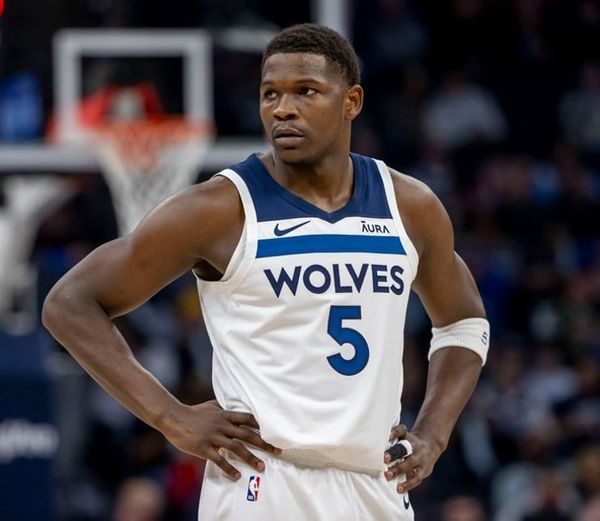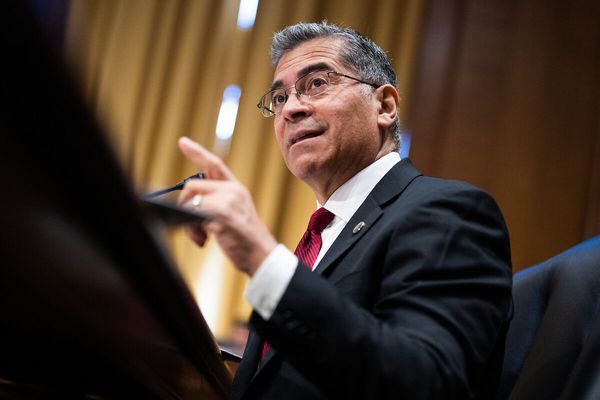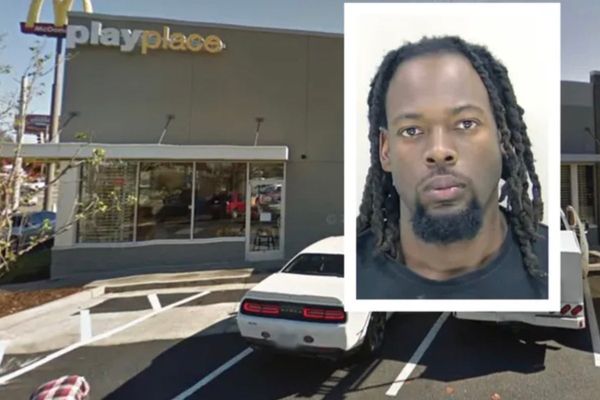
Throughout the 2023 NFL season, Damar Hamlin did far more than simply return to professional football. He did come back, of course, after dying on a field that Jan. 2. Only to be saved, resuscitated, as players who understand that violence is inherent in their sport wiped tears from their cheeks. Hamlin became an advocate, an inspiration and a miracle, in human form.
Which was great and all. But while Hamlin wanted those things, while he embraced the rapid transformation of his life and helped because he wanted to, advocacy and inspirations and even wearing a Buffalo Bills uniform again were not what he really wanted.
Which was:
To start at safety.
To impact playoff teams.
To bring the Mafia its first Lombardi Trophy and celebrate with a parade in Buffalo.
To show everyone who loved him that he loved them, just as much, right back.
Hamlin wanted to resume, more or less, the path he had already charted before that night in Cincinnati. Before that tackle. And before that harrowing sequence, sudden and terrifying and instantly international news, when he went into cardiac arrest.
Which was great and all. He took issue only with an assumption that seemed to percolate, intensity heightening as his comeback began to take an unexpected shape. Hamlin doesn’t need to name those who felt this way, but he felt their collective concern. Even supporters, understandably, watched him play five games after dying on a football field and couldn’t contain their fears. He saw it in their eyes. Heard it in their warnings. And—while this debate over Hamlin, violence, passions and football heightened week after week—the man himself was still processing what happened. He hadn’t reached any conclusions, let alone a definitive version, not one.
“I had to have the tough conversations,” he says.
He means throughout last season, his 2023 exit meeting, mini-camps, training camp and this season … all the way to now. He wasn’t upset with the Bills, but he didn’t want some sort of ceremonial roster spot, either.
As Hamlin sorted through what happened and what he wanted, deep, sometimes difficult emotions pulsated beneath the surface. But as he shaped his mindset, he wanted his coaches and other decision-makers at 1 Bills Drive to understand what mattered to him, too.
“I’m not here to get cardio,” he told coaches after the 2023 season ended in another playoff exit. “I want to make a difference on the team. I want to be a leader. I want to have high expectations … for me. And I’m coming back for camp in that mindset.”
Hamlin is on the phone from Buffalo on the Wednesday night before the AFC championship game. He’s laughing, sighing and holding more than one conversation simultaneously. He says that, once he laid out his mindset to coaches and execs, he kept his mouth shut and went back to work. He already believed. He had never doubted, not the playing football part. He would show them the significance behind his words and that new ethos.
“People knew I had overcome so much adversity,” he says. “I was symbolic, in a way. But I really wanted to grow as a football player.”
I told him about another player I’d interviewed, who had also returned from an injury so graphic and gruesome even the toughest NFL players would have not dared consider. “I’m not f---ing Rudy,” this player said back then.
“Like, for real, that’s it,” Hamlin says. “That’s an exact quote of how I feel.”
We had last spoken for a magazine piece in late 2023. At that time, Hamlin seemed confused, fairly, still processing and grieving and strengthening what could be strengthened. He didn’t come right out and say that he was disappointed with this comeback, perhaps the single greatest in sports history. I read him something he said then:
It’s not easy at all. It’s not even as easy as I thought it would be. It’s super tough. It’s extremely tough.
Underneath that admirable honesty, though, anyone who listened closely to Hamlin around then would have picked up on what he didn’t say. He believed—knew—that this comeback, his comeback, had only just started. “I kinda seen the vision,” he admits this week. “I’m spiritual. I like to populate everything into God’s plan, God’s timing. And I just felt connected to what I knew was going to happen, what I was capable of.”
He asks for screenshots of those quotes from late 2023, because, Hamlin says, he wants to remember the THEN, especially in contrast to the NOW. This “now” is far more than great and all. It’s just great. Or better than. Buffalo finished 13–4 this season; upended the Kansas City Chiefs, their then unbeaten rival; won the AFC East and secured the conference’s No. 2 seed.

Three days earlier, Hamlin had powered a playoff victory over the Baltimore Ravens in the divisional round. His strip sack of Lamar Jackson jarred the ball from the MVP’s hand. Pass rusher Von Miller scooped it up and rumbled nearly all the way down field.
On Sunday, Hamlin will step on a frozen field in Kansas City. In uniform. In the conference championship game. One triumph from the Super Bowl.
Serious question: While allowing for recency bias or parsing what cannot, truly, be parsed, isn’t this the greatest comeback story, ever, in any sport? An argument could certainly be made …
“Man, I’m just livin’,” Hamlin says. “Like, I’m walking it, you know what I mean? I don’t get to really soak it all in, all the way, because I’m still in this moment.”
Hamlin says he made last year “tough” on himself, intentionally. He’s asked for more detail, an anecdote. He refers back to the processes in play, the healing and understanding, the reclaiming not just peak physical form but a newer, stronger mindset.
When Hamlin heard strangers lamenting his decision last season, he understood that he knew what they could never understand. Not without a body swap. When he felt scared, nervous, anxious, sad or any other emotion among those swirling, he didn’t push them off. There were days he didn’t want to practice football, days he didn’t want to play football, even days he didn’t want to be around football. The thought of returning to an actual field, playing in a live NFL game and making his first tackle since, well, you know, didn’t scare him so much as dominate his thoughts—and for long stretches.
“I wanted to be the farthest away I could from our facility, at times. In meetings, just football language, things like, ‘It would have killed them’ or, ‘We’ll be dead’ … I was triggered by so much, like, regular football communication. And it would f--- with my day-to-day life.”Damar Hamlin
“I wanted to be the farthest away I could from our facility, at times,” he says. “In meetings, just football language, things like, ‘It would have killed them’ or, ‘We’ll be dead’ … I was triggered by so much, like, regular football communication. And it would f--- with my day-to-day life.”
He worked through that. More importantly, he sat through that. He didn’t force solutions to his emotions. He didn’t ignore them, either. He simply let them exist, which led his brain to process them, which led to those thoughts intruding less and less often, until one day Hamlin realized he wasn’t really having them at all. And, in all that work, Hamlin says he became more and more in-tune with himself and his emotions. He didn’t want to prove anything to anyone besides himself and his team.
“I was just telling my lady, you know, the season’s coming to an end. We got a possible two games left. Regardless of anything, I’m gonna miss this season. Because football—truly—brings out the best in me. I want to put it all together, within my entire life.”
His play throughout 2024 proved Hamlin’s intuition and self-confidence (not quite delusion!) far more than anything he could ever say. He had 10 tackles in a Week 2 win over the Miami Dolphins, an interception in a blowout victory over the Jacksonville Jaguars and started 14 games. His Pro Football Focus grade dipped some in recent weeks: At 60.2, he ranks 107th among eligible safeties across the league. That doesn’t fully capture his impact. Two evaluators who work for other teams tell SI that Hamlin played at a Pro Bowl–caliber level, or at least at a level approaching that.
Hamlin says there wasn’t a single moment that signaled everything upcoming, no movie sequence where the hero overcomes the impossible and embarks on the Rocky training montage and then, suddenly, the fortification of body and mind clicks into a greater whole. His understanding of this season, his play and his place in the NFL was more gradual, a process Hamlin also didn’t rush, with even more emotions he also forced himself to sit with.
“I’m just repaying my blessings,” Hamlin says.
Hence why his advocacy continued as his playing time shot up. On Christmas Day, President Joe Biden signed a bill into law. Hamlin (episode, recovery, inspiration) was at the center of its aims. He even worked on shaping it, much like his football career and not at all the same, with Senator Chuck Schumer. The HEARTS Act (which stands for Cardiomyopathy Health Education, Awareness, Research and Training in Schools Act), will put AED training, which saved Hamlin, into schools all over the country. “Super dope,” Hamlin says. As was the scholarship he created, as part of his Chasing M’s Foundation’s efforts. The Buffalo Heroes Scholarship will provide support for underserved high-school and college-bound students who attend public high schools, private schools or trade schools in greater-Buffalo. It will honor the Bills’ athletic training staff members who helped save his life two years ago.
Hamlin says he didn’t doubt these Bills heading into this season. He does acknowledge a higher-than-normal amount of roster change. He tried to draw on his college experience, at Pittsburgh, where he became a “fundamental piece” of a grand rebuild. Only after Hamlin went to the NFL did the Panthers realize what they’d built. They won the conference championship. He sought to do that, again, but in Buffalo, in this season and as part of the payoff, too.
He didn’t fear change. He embraced it. Teammates, Hamlin says, did the same. He saw buy-in, commitment, support. An identity formed. “We’ve been the same team ever since,” he says. “We haven’t changed. We haven’t redefined ourselves. We’ve refined ourselves. Just fine-tuned it.”
Hamlin loves Sean McDermott, his head coach. Hamlin chooses that word to add significance to his answer. He doesn’t mean it in the “adore” sense. He means it in a deep-in-his-bones one. McDermott came to Buffalo in 2017 with a reputation as more of an emotional cyborg, dry and direct, blunt and sometimes in ways that could be painful. Parts of that rep were fair. But that’s not the coach Hamlin met in ’21. The safety says McDermott empowers players, allowing them to play freely and grow.
This season, McDermott has leaned even more into his authentic self, Hamlin says. He also already knew that guy. In his second season (2022), Hamlin made his second start, ever, against the Ravens. Injuries had shelved him some before then. Late in that game, he missed a tackle, while the back scampered into the red zone and forced McDermott to call timeout.
“Walk that play away,” McDermott told him.
Meaning, Hamlin says, “He believed in me, and I could do it.”
Same game. Even later. Third-and-goal. That’s Hamlin on the tackle, forcing a desperation call on fourth down, which a teammate intercepted. “That could have been a defining moment in my career,” Hamlin says. “And it was! But it was a positive defining moment. That was everything to me.”
Same cycle in this season, right? Doubts, mistakes, overcoming, affirmation—that’s the cycle of Hamlin’s life.
I ask if he has at least dreamt about the Super Bowl. His loftiest goal, check. That timeline from Jan. 2, 2023, to Feb. 9, 2025, when LIX will kick off in New Orleans … staggering. Even if the full enormity of what he did the past two years hasn’t been fully realized internally, surely Hamlin at least thought about that?

For the first time on this call, he pauses and resumes and waffles. It’s like he’s trying to figure out how to politely say what he wants to say. The easy answer is, of course. Every NFL player dreams of playing in that game above all other games. “Yeah,” Hamlin says, “that would be insane.” That doesn’t mean he’ll relax on staying present; instead, he’ll cling to the process that made his comeback possible. He’s not going to bed this week dreaming of dinner at Jacques Imo’s in early February, in other words.
After all, the Bills still have to beat the Chiefs—and, not in the regular season, like a few months back, but in the playoffs. They’ve lost to K.C. three times in the postseason since January 2021, twice with Hamlin in the fold.
He starts to dream a little and out loud. “I mean, when the clock [is] winding down this week in Kansas City, and we have the lead with a couple seconds left in the fourth quarter, that’s when it all might start to seem a little bit real,” he says. “I don’t know, man. I don’t want to do it to myself”—meaning predict, brag, guarantee—“but I believe in myself.
“That’s how I got here.”
He laughs and pauses, as if to allow the enormity of what’s ahead to sink in. And then, he resumes talking, as if he dismissed such notions immediately in his own mind. Not yet. Not now.
“Bro,” he says. “Bro! I still feel like I’m figuring it out, man. I did some soul searching; some finding myself, just as a man, a human and a survivor. I’m ready for whatever’s next.”
This article was originally published on www.si.com as ‘Ready for Whatever’s Next’: Damar Hamlin Reflects on Journey to AFC Championship.







